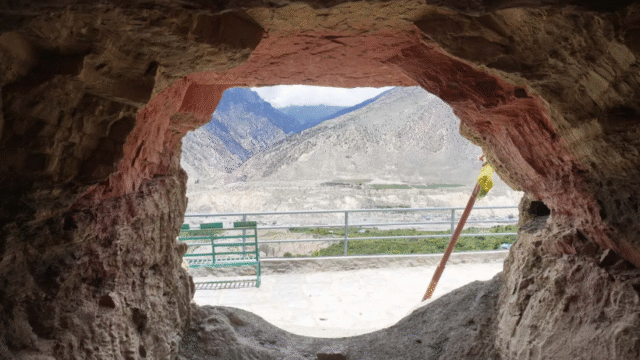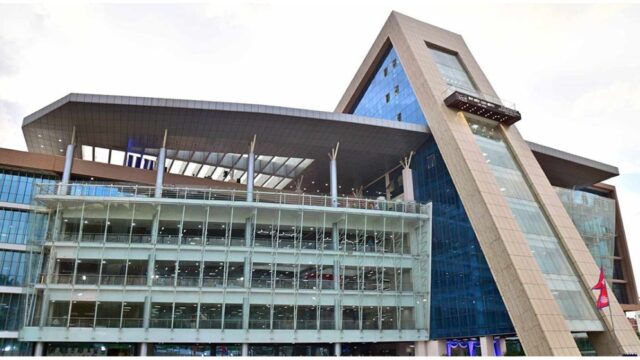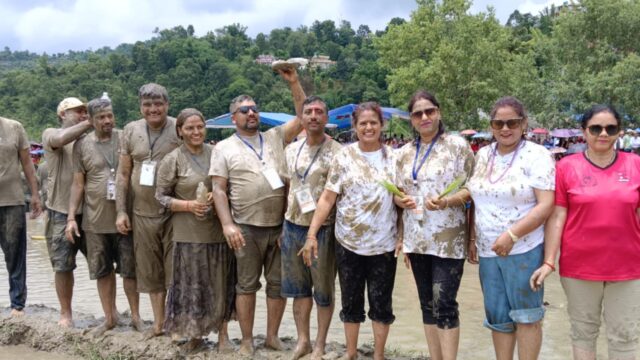In a significant move to enhance tourism in the Sagarmatha Trekking Trail (Everest Trekking Trail), the Province 1 government has allocated NPR 12.5 million for preliminary infrastructure development. This funding targets the improvement of key trails from Larcha to Namche Bazaar, Gokyo, Cho Oyu, and from Phorche to Sagarmatha, aimed at making the region more accessible for tourists.
Laxman Adhikari, Chairman of Khumbu Pasang Lhamu Rural Municipality-4, stated that the final phase of infrastructure development is underway. He highlighted that these improvements are crucial for boosting tourism accessibility in the area.
The Sagarmatha region’s tourism potential emphasizes the importance of these infrastructure enhancements. The historical significance of these trails, used by the first climbers Sir Edmund Hillary and Tenzing Norgay Sherpa during their ascent of Sagarmatha, further underscores the need for these improvements.
Geographical challenges and the previously deteriorated condition of the trails have historically made trekking difficult, often resulting in tourist dissatisfaction. However, the provincial government’s efforts have led to significant progress in widening and enhancing these paths. Adhikari noted that the previously narrow four-foot paths are now being expanded to approximately seven feet, with the addition of staircases and steps.
Moreover, the provincial government has allocated NPR 25 million for the development of the Gokyo Himal and Cho Oyu Himal trekking routes, supporting tourism in these renowned destinations. Despite the ongoing tourism season, continuous development has shown promising results in improving tourist accessibility.
The majestic Cho Oyu Himal, standing at an impressive height of 8,188 meters, remains a significant attraction, drawing both domestic and international tourists to the region.
Local hotelier Kaji Sherpa expressed optimism about the ongoing infrastructure improvements, emphasizing that enhanced trails will facilitate easier access for tourists and contribute to the economic growth of the Sagarmatha region.
Access to these areas remains challenging, as roads do not extend to the trekking paths. Tourists typically begin their journey from Lukla Airport, accessible by air from Kathmandu or Ramechhap, followed by a trek to Everest Base Camp. The distance from Lukla to Everest Base Camp is approximately 65 kilometers, making helicopter travel and other transport options essential.
Each year, between 50,000 to 55,000 tourists visit the Sagarmatha region, according to the Sagarmatha National Park. The region’s high-altitude landscapes, rugged mountains, and challenging terrain continue to attract adventure seekers.
Improvements in trail infrastructure, such as the installation of stone steps and staircases along previously rocky and difficult paths, have reassured tourists and guides alike. Palme Sherpa, a local guide, emphasized the importance of these developments for both the safety and satisfaction of tourists visiting the Larcha to Dobhan region.
Despite these improvements, challenges remain, including narrow and winding paths through the Khumbu region, which require careful attention to ensure the smooth flow of tourists. Tourist guide Dik Bahadur Darnal suggested establishing resting areas and relaxation spots along these routes to further enhance tourist satisfaction.
With ongoing efforts by the provincial government and local authorities, the Sagarmatha region aims to serve as a gateway to Solukhumbu and a pivotal destination for both domestic and international tourists. Budhikumar Rajbhandari, a former minister and current Member of Parliament from Solukhumbu, stressed that these developments are crucial for the region’s growth, ensuring sustainable tourism in the future.






